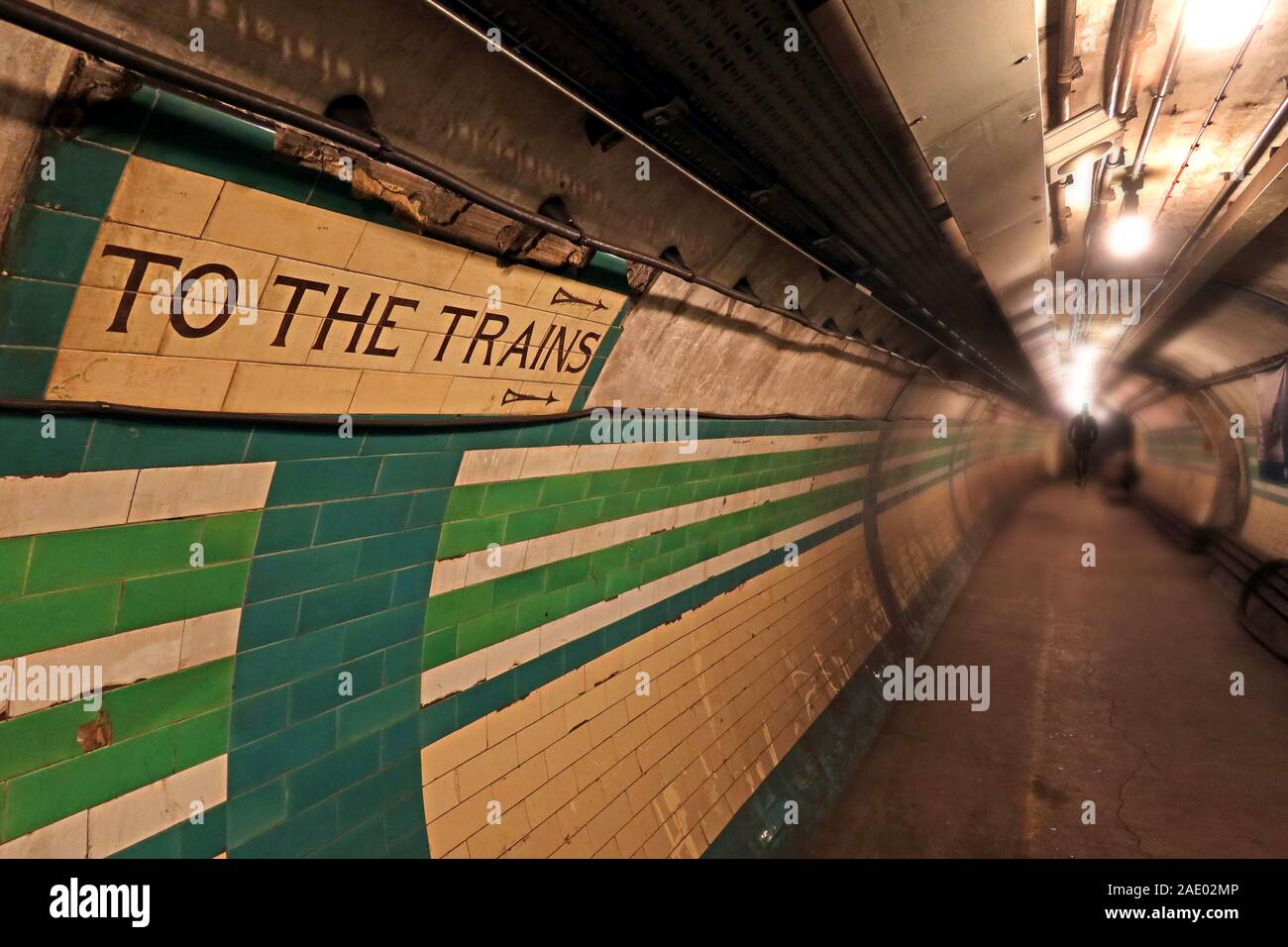To The Trains sign, London Underground Tunnel, down in the Tube Station at midnight, London, South East England, UK

Image details
Contributor:
Tony Smith / Alamy Stock PhotoImage ID:
2AE02MPFile size:
57.1 MB (1.7 MB Compressed download)Releases:
Model - no | Property - noDo I need a release?Dimensions:
5472 x 3648 px | 46.3 x 30.9 cm | 18.2 x 12.2 inches | 300dpiDate taken:
30 November 2019Location:
London, SE England, UKMore information:
The metropolis of London has been occupied by humans for two millennia, and has over that time acquired a large number of subterranean structures which have served a number of purposes. The London Underground was the first underground railway in the world, and is still one of the most extensive. Its construction began in 1860 with the 3.7-mile (6.0 km) Metropolitan Railway from Farringdon to Paddington. It was opened in 1863, having caused much disruption by the use of "cut and cover" techniques, which involved digging large trenches along the course of existing roads, and then constructing a roof over the excavation to reinstate the road surface. Tube railways, which caused less disruption because they were constructed by boring a tunnel, arrived in 1890, with the opening of the City and South London Railway, a 3.5-mile (5.6 km) line from Stockwell to King William Street. It was planned as a cable-hauled railway, but the advent of electric traction resulted in a simpler solution, and the change was made before the cable system was built. It thus became the world's first electric tube railway. Although the whole system comprises 249 miles (401 km) of track, only about 45 percent is actually below ground. Kingsway has an almost intact underground passageway for trams which is rarely open to the public. See Kingsway tramway subway. Numerous tunnels underneath the River Thames have been created, ranging from foot-tunnels to road tunnels and the tunnels of the Underground. The first of these, the Thames Tunnel, designed by Marc Brunel, was the first tunnel known to have been successfully constructed under a navigable river. It ran for 1, 200 yards (1, 100 m) from Rotherhithe to Wapping, and was opened in 1843. It was used as a pedestrian subway, as the finance was not available to allow the company to build the intended access ramps for horse-drawn traffic, and was later used by the East London branch of the Metropolitan Railway from Shoreditch to New Cross.